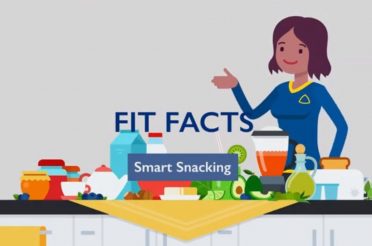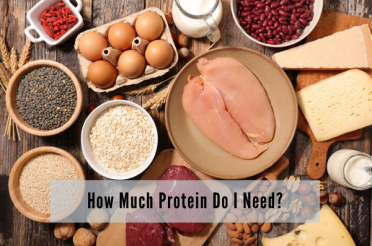To support our channel and level up your health, check out:
Our Fast Weight Loss Course:
Our Better Health Basics Course:
Today I am going to teach you guys how to read nutrition facts labels. One of the best ways to improve your health quickly is by learning how to read nutrition labels.
The first thing you’ll notice at the top of nutrition facts are the serving size and servings per container.
This is simply the “amount” in the package or container.
Pretty self explanatory…
Next you have the ingredients.
Everything inside these black lines is representative of ONE serving.
This is important to understand because, next you will see the calories and the calories from fat.
This is pretty much the only thing most people ever look at and this is a common mistake…
If the package says 200 calories on the bag of chips, but the serving per container says 2.5, that means there is actually 500 calories in the bag…
This is a clever little marketing trick that you should pay attention to.
Pressing on, you will see the total fat on the package along with a number and a percentage on the right hand side.
The number represents the total fat in one serving and percentage represents the percentage based on a 2000 calorie diet.
So 8 gram is 12% of a 2000 calorie diet.
I should also remind you that fat is not bad for you and there are plenty of healthy foods that are high in fat.
What you really want to watch out for is any trans fat.
Trans fat is the kind linked to heart disease and all sorts of bad stuff. Avoid this at all costs.
Saturated fat should be much less of a concern.
This may surprise some of you, so I will link a few studies below that have conclusively proven that saturated fat is fine to eat and not the cause of the many diseases it was wrongly accused for.
Think of saturated fat as the middle child of the fat family, he’s got a good heart but is just a little misunderstood.
Now, you may be thinking, wait a minute…
Why does the total number of saturated fat and trans fat not add up to the total fat at the top…
Where’s the other 7 grams?
Well this is because not all fats will be listed on the nutrition label.
Only the nutrients deemed most important ever make it to the nutrition labels.
Don’t worry though.
The other fats not listed are generally healthy and should be much less of a concern.
Pressing on you will see cholesterol and sodium.
Remember, these numbers are based on ONE serving.
If the sodium was 25% of your daily intake and the package had 2.5 servings in it. That means the entire package contains 63% of you daily sodium intake.
Quite a bit considering this is one snack.
Onward, you’ll sees the carbohydrate section.
Carbohydrates are the breads, grains, fiber and SUGARS in the food.
The first section you’ll see is for dietary fiber.
Having a good amount of dietary fiber is a good thing as it helps with digestion and satisfaction from meals.
Now the next section is what you need to pay attention to.
The total sugars in the food you’re eating are important to watch out for as, like the trans fats, these have been linked to a whole host of diseases and health problems.
Also you should be aware of not only the sugar in the food, but what kind of carbohydrates you’re eating.
If the food is very high in carbohydrates, but low in dietary fiber, even though the carbs are not labeled as “sugar,” they will operate very similarly in the blood stream.
These are called “simple carbs.”
This is why you need to watch out for unrefined carbohydrates like white bread and pastas.
Next up, you’ll see the label for protein.
Knowing that foods high in protein lead to better satisfaction from meals, and promote lean muscle tissue, you will want most of the foods you eat to have a good amount of protein.
Finally, we have a few key vitamins at the bottom.
It may sound strange, but ignore these.
The numbers will be notoriously low and you should be focusing instead on getting in lots of fruits and vegetables every day to meet your vitamin requirements.
Leafy greens contain calcium and iron, and fruits contain vitamin c and a.
The rest of the nutrition labels facts contain recommendations about how much of each category to get in.
They do not change on nutrition labels and are not that important.
Finally, on some labels you will see the calories per gram for each macronutrient.
Fat contains 9 grams per serving and Carbohydrates and Proteins contain 4.
So for every 10 grams of fat, you will have 90 calories. For every 10 grams of protein or carbs you will get 40 calories.
Safe to say, you should now have a general understanding of how nutrition labels work.
Most importantly, you can stop assuming something is healthy for you based on tricky packaging and start KNOWING the difference.
source







